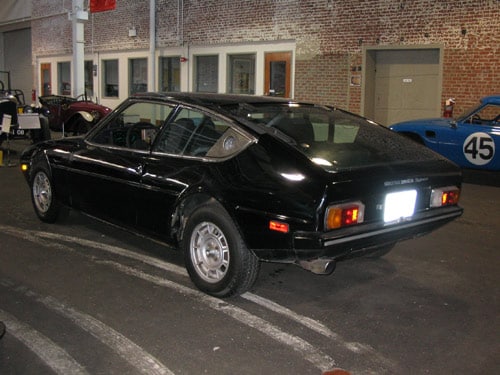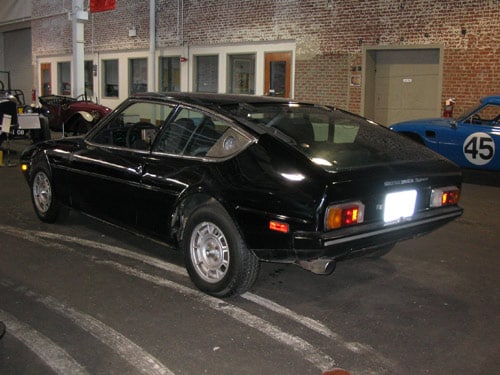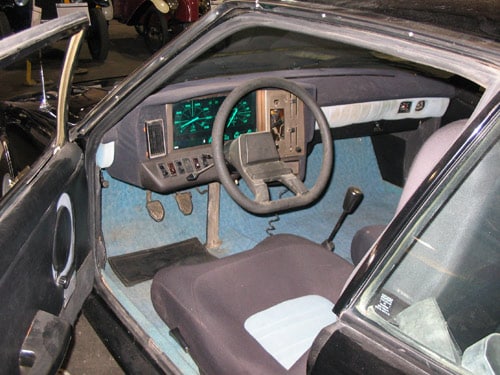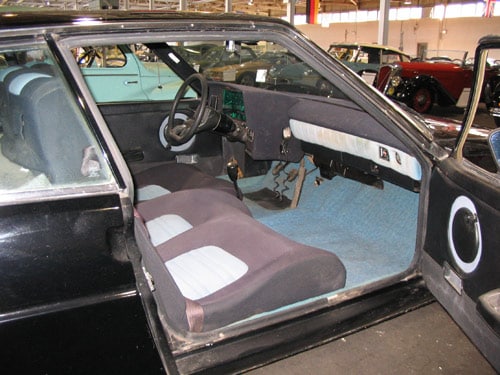
Matra Simca Bagheera S Coupè- 1975

In 1969, Matra was taken over by SIMCA, which in turn became fully Chrysler-owned one year later. Matra continued with their mission to produce an inexpensive, economical sports car, using off-the-shelf power units and running gear coupled with dramatic styling. In 1973, Matra introduced their newest concept, the M550—better known as the Bagheera and named after Rudyard Kipling’s Jungle Book panther.
The Bagheera chassis showed many signs of Matra’s aero-engineering expertise. Matra also recycled the best of the M530 ideas with the new Bagheera. The body was made of fiberglass, while the chassis used an ungalvanized steel spaceframe with a mid-engine layout; this time the engine was inclined and mounted transversely ahead of the rear axle, a layout favored by racing and performance cars. The body was bonded together under heat and pressure to make a rigid shell of body panels made of glass reinforced plastic (FRP) or fiberglass. The 19 component panels added strength and stiffness and was about 30% lighter than steel, even though they were 4 times as thick. This gave it a low curb weight of 1952 lbs, and excellent aerodynamics. It was also highly economical— 30mpg, achieving the goals that Matra set for it.
Both the styling and the function of the Bagheera was a collaborative creation. First drawing concepts were conceived by Matra designer Jean Toprieux. Ex- SIMCA stylist Jacques Nochet developed in-depth sketches and scale models. Nochet’s attributed details are seen on the exterior with crisp, tight shut lines and surface variation with vents, ribs and indentations. A young Greek designer, Antoine Volanis, re-imagined Bagheera’s instrument panel and designed the unique two spoked, “A” pattern steering wheel that offered sight lines to his instrument panel. But the Bagheera’s most noted feature came in the form of the three-across seating. This was the idea of Phillipe Guédon, who was Matra’s head of engineering at the time. As legend goes, during a lengthy trip in a heavily-loaded Ford Taunus station wagon, Guédon and two colleagues needed to share the front seat. In these tight quarters, Guédon thought up the Bagheera’s unique seating. With this new asymmetric arrangement, without the use of the central console, a spacious floor was opened up.
Under Chrysler, the Bagheera had much more exposure to the public and was Matra’s highest-volume production car. Between 1973 and 1980, Matra produced 47,802 Bagheeras at its Romorantin-Lanthenay factory. During its final two years of production, the Matra designation changed to Talbot-Matra after Peugeot purchased the entire Chrysler Europe division from the financially-strapped American carmaker.
Specifications:
Manufacturer: Matra-SIMCA Division Automobile
Country of Origin: France
Drivetrain Configuration: Mid-engine, transversely-mounted, rear wheel drive
Engine: Water-cooled 1,294 cc, inline OHV, 4 cylinder (SIMCA 1.4-liter engine)
Transmission: 4-speed manual
Top Speed: 115 MPH
Years of Production: 1973-1980
Number Produced: 47,802
Original Cost: $7600


